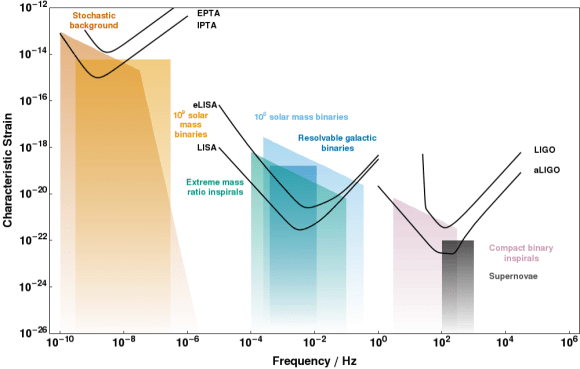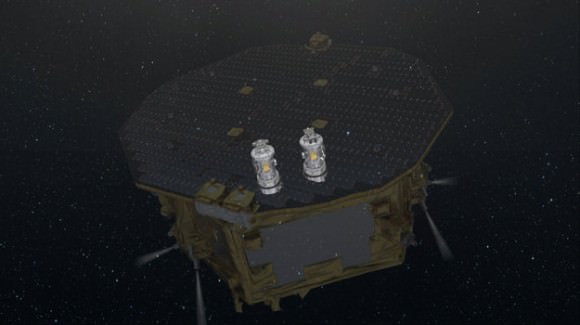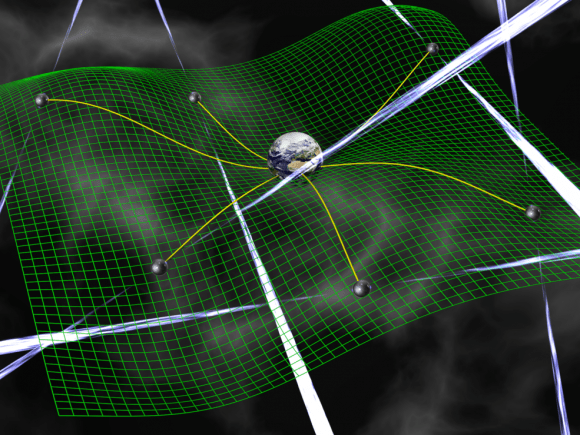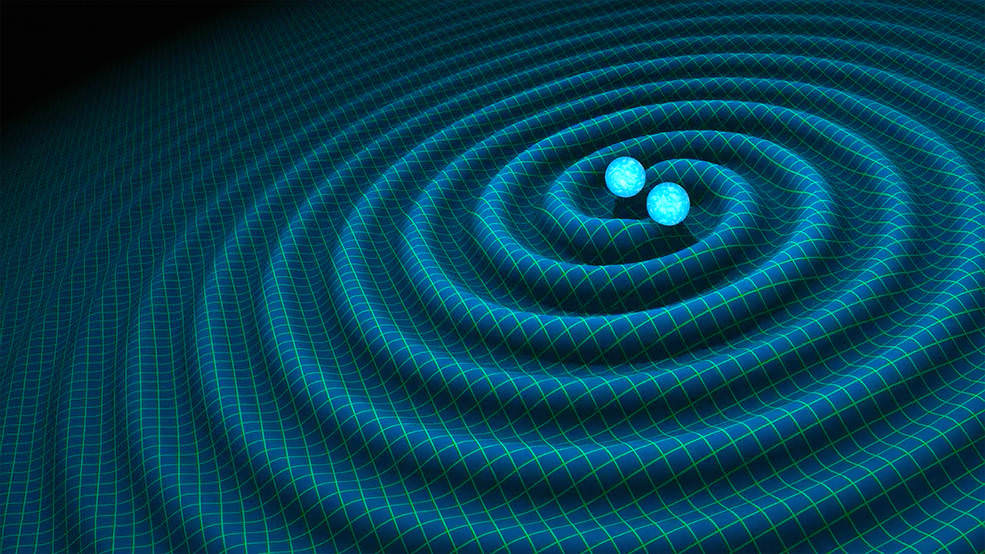It’s the hot new field in modern astronomy. The recent announcement of the direct detection of gravitational waves by the Laser Interferometer Gravitational-wave Observatory (LIGO) ushers in a new era of observational astronomy that is completely off the electromagnetic spectrum. This detection occurred on September 14th, 2015 and later earned itself the name GW150914. This occurred shortly after Advanced LIGO turned on in early September, a great sign concerning the veracity of the equipment.
Expect more to come. Perhaps the second gravitational wave detection won’t be as ground breaking as the first, but it is certainly a strange universe out there. LIGO didn’t happen overnight. The original LIGO ran for about a decade starting in 2002, with nary a gravitational chirp heard that managed to pass scientific scrutiny. There were actually Vegas odds placed on the direct detection of gravitational waves (along with CERN’s discovery of the Higgs-boson particle) way back in 2013: we hope no one lost their shirt on that one.
And yes, you could trace the tale all the way back to Einstein’s general theory of relativity a century ago in 1916, positing the existence of gravitational ripples in the fabric of space-time. Early attempts to detect gravitational waves using giant cylindrical Weber bars in the 1960s and 70s highlighted just how difficult the hunt for the little buggers would ultimately prove to be. The type of motion LIGO is looking for is tiny, on the order of a 1/1000th the diameter of a proton. Everything in LIGO’s local environment shakes it more than that, the prime reason two geographically separate detectors are needed. The indirect detection of gravitational waves seen in the timing glitches of binary pulsar PSR B1913+16 earned Russell Hulse and Joseph Taylor the Nobel Prize in Physics in 1993.
LIGO is now open for business, but isn’t the only game in town when it comes to gravitational wave astronomy.
Gravitational-wave astronomy is going international, as LIGO India (sometimes referred to as INDIGO) received the green light recently in the wake of the detection announcement. Set to begin science operations around 2019, the third LIGO detector will be constructed in India. This will give LIGO the ‘third vector’ it was initially envisioned with, allowing researchers to pin down the source direction in the sky. Other detectors are on the hunt as well, including VIRGO near Pisa, Italy, GEO600 in Germany, and KAGRA Japan.

Engineers aren’t stopping with the current version of LIGO. Just as Advanced LIGO built on the hard lessons learned by old school original LIGO and Enhanced LIGO, later versions will hone those skills and techniques, featuring ever greater sensitivity.

LISA Pathfinder also started science operations this week. Launched on December 3rd, 2015 from Kourou, French Guiana, LISA Pathfinder won’t detect gravitational waves. It will, however, pave the way for a full-up space based gravitational wave detector, set to launch sometime in the 2030s. Yes, its hard to imagine that 2030 is now closer to us in time than Y2K. eLISA stands for the evolved Laser Interferometer Space Antenna, and will feature three free flying variants of the LISA Pathfinder spacecraft with an interferometry baseline of a million kilometers on a side. The gold-platinum test masses are in free flight starting this week, a first. eLISA was born out the original joint NASA/ESA LISA mission, after NASA pulled out of the project in 2011. JAXA also has plans for a space-based gravitational wave detector dubbed the Deci-hertz Interferometer Gravitational-wave Observatory (DECIGO), planned for launch sometime around 2027.

-And finally; could ‘pulsar webs’ be used to detect low frequency gravitational waves? It’s not as outlandish an idea as it sounds. A recent study from the North American Nanohertz Observatory for Gravitational Waves (NANOGrav) is looking at using radio observations of millisecond pulsars. Unlike the violent event witnessed by LIGO – a merger of two black holes each about 30 times the mass of our Sun — low frequency gravitational waves should be generated by orbiting massive black holes resulting from galactic mergers. Such a ripple in space-time would sweep slowly past the Earth, but reveal itself in minute timing variations from remote pulsars. Imagine the Earth at the center of such a web, gently ‘rocking’ like a leaf on a pond as ripples pass by. Seeing this tell-tale variation across hundreds of pulsars would provide the smoking gun for this unique sort of detection.
All amazing stuff. We now live in an era where gravitational wave astronomy is now a reality.
Expect more amazing finds to come!


I think it was Sept 14 rather that 15, that’s why it’s GW150914. Although the American dating format is confusing enough anyway:)
Already the first detection has already opened up a debate about whether a collapsing giant star can give rie=se to two black holes, which in turn implies that angular momentum can escape an event horizon
It makes me think of all the times when I was a kid or teen, when I thought of past events and wished I could have been around to witness them. Later, I finally realised I’m in “present” history. Stephen Hawking is alive, we discovered the Kuiper Belt, we visited Pluto, discovered gravitational waves are real, etc., all in my lifetime. n_n